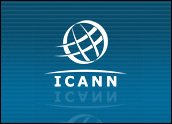
Imagine: One morning you see roads and highways everywhere but you are totally unaware of the invention of a car. Holding just a wheel in your hand, you ponder some vague possibilities as to how the million miles of roads and highways might be used. That’s exactly where we are today with respect to the information superhighway.
So far, there are flashy Web sites, and there are e-mail addresses. The situation is primitive. This is just like having a wheel in your hand and being totally oblivious to the finer workings of an automobile — never mind a tractor, a forty-foot trailer or a bullet train.
Corporations are in need of quick and serious shock therapy to prod them out of the complacency of owning a few flashy Web sites. The exuberance that attended these early achievements fueled the false notion in many corporate boardrooms that their firms had become “the master players of global e-commerce.”
Let’s face it; most organizations were able to perpetrate this misconception because they had a few Web pages linking to the Net. That won’t work anymore. E-commerce has become vast, and it demands a deeper understanding of how to capitalize on this freely available trillion-dollar public infrastructure.
It is time for a reality check.
Some 10,000 Web sites of the top businesses around the world were analyzed in a recent study by ABC Namebank on the issues of cyber-branding. Each was measured on its distinct personality and visibility, as well as its value to the end user. The study was divided into two parts: the timeline of initial adoptability and the bottom line of returns and profitability.
The results were alarming. Following are some key points for the corporate world to take to heart.
Timeline Issues
Companies scored very high during the adoptability phase, with most successful at quickly creating a modest Web site. Their efforts to strive for increased readership were effective.
However, most continue to struggle to ensure minimum hits for their online banner advertising. Strengthening their e-commerce image is now becoming a major challenge for many corporate communications departments.
Bottom-Line Issues
The ability to apply sophisticated e-commerce models to understand the precise nature and the rules of profitability was found to be extremely poor in the ABC Namebank analysis.
Thousands of companies relied on the same few overused models and fell flat. As with e-commerce, in general, only the best — the top names in a category — will survive. In this race for the top, millions will sink to the bottom.
Surprisingly, the Web sites of some big operations were lost in the depths. The road can be perilous for e-commerce players, as they move by the thousands in a straight-line queue, anxiously waiting to get attention.
Following are the top two reasons for most e-commerce failures, according to the study.
Lack of a Selling Proposition
There are millions of e-commerce sites selling millions of basic products and services. So what? Commoditization will certainly kill the business, as some sales are made only by sheer accident.
It’s one thing to compete selling screwdrivers, but to offer advanced assembly ideas, with a screwdriver provided as one of the essential tools, is a better selling proposition.
“Cheap” is losing its power as now “free” is in.
Global competition is so fierce and the labor-cost disparity is so wide that most bargain pricing is no longer effective, as there is always some other supplier to offer a product for far less — or even for free.
Most corporations are still stuck in the print-advertising mentality, and they see their selling proposition somewhere in the middle of an old-fashioned glossy brochure.
The traditional promotional model with its typical graphic overdose is often replaced on the e-commerce front with animation overload. This approach replaces all the intelligence from the actual proposition with little, or useless, information, giving sharp deal hunters little motivation to act or to come back for another visit.
Total Oblivion
Any Web site or portal — or any e-commerce strategy — is simply doomed from the start without a Five Star Standard of Naming.
Ninety-nine percent of e-commerce sites are unsearchable. This means that unless a potential customer remembers all the twisted spellings and all the added differentiators of a URL — including dashes and slashes — and is also aware of whether the suffix is dot-com or dot-net, access is close to impossible.
When a site is lost in oblivion, it’s doomed, and the e-commerce game is over. Period. With millions of sites being added all the time around the world, there is much to be said about the practice of using simple, unique, one-of-a-kind, globally protected identities. This requirement demands the application of a Five Star Standard.
A Few Recommendations
If your company is serious about e-commerce, you should formulate a management task force to review your approach as a critical boardroom-level issue.
Bring open-minded IT teams closer to marketing operations. Seriously explore your selling proposition and image-positioning strategy, and examine your current URLs’ naming with an eye to any related difficulties with getting search-engine exposure.
Professionally audit the liabilities of your URLs, and have them analyzed using some proper standards. Nothing less then an open debate in search of a perfect solution will work. Welcome to 2006.
Naseem Javed, author of Naming for Power and alsoDomain Wars, is recognized as a world authority on global nameidentities and domain issues. Javed founded ABC Namebank, aconsultancy he established a quarter century ago, and conducts executiveworkshops on image and name identity issues. Contact him at [email protected].










































Social Media
See all Social Media